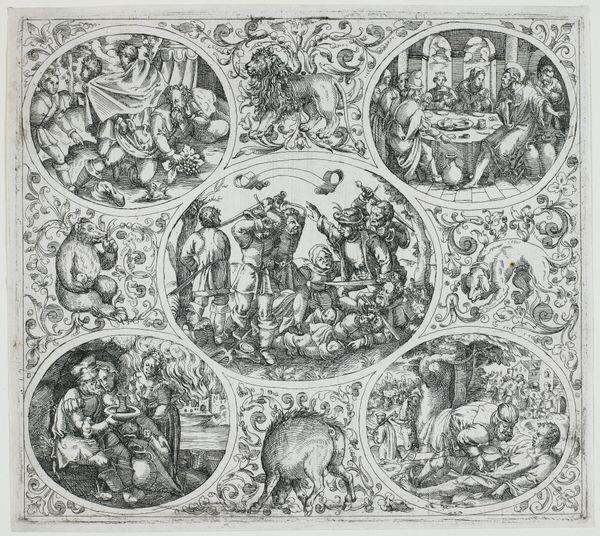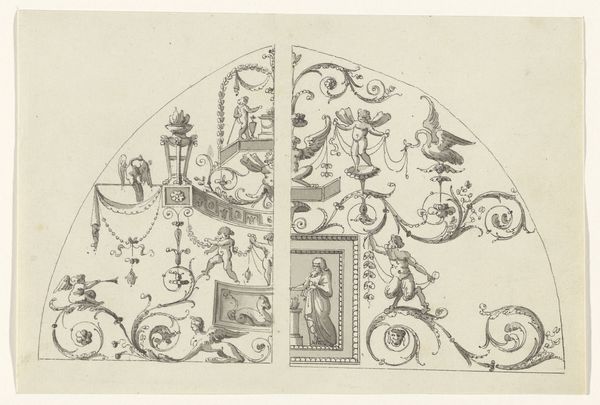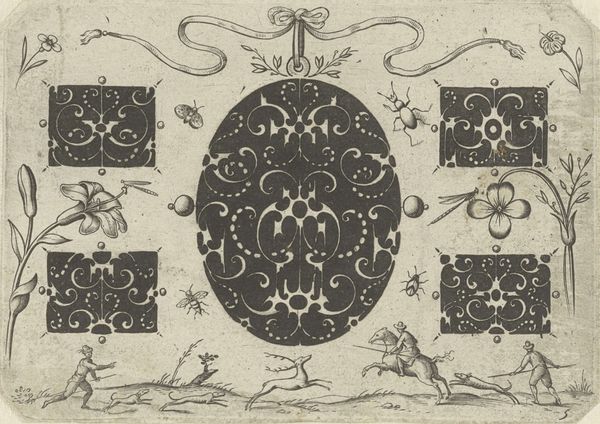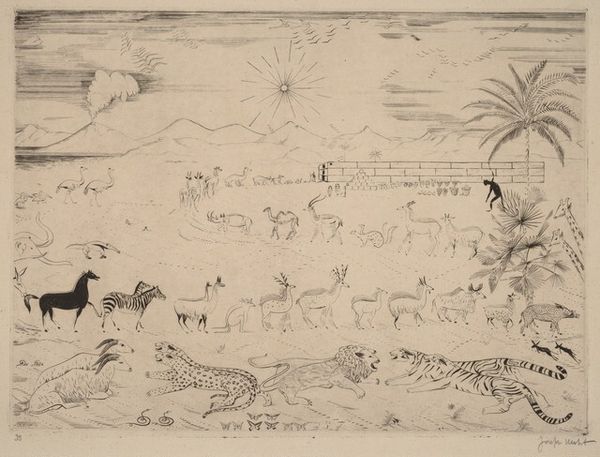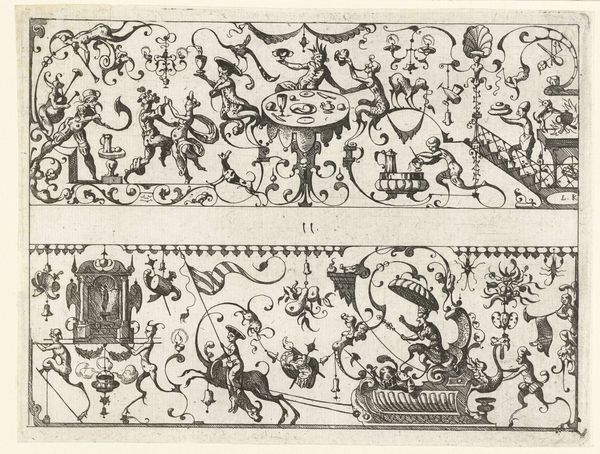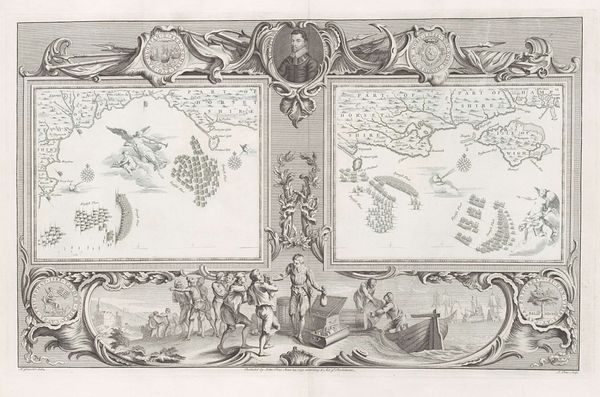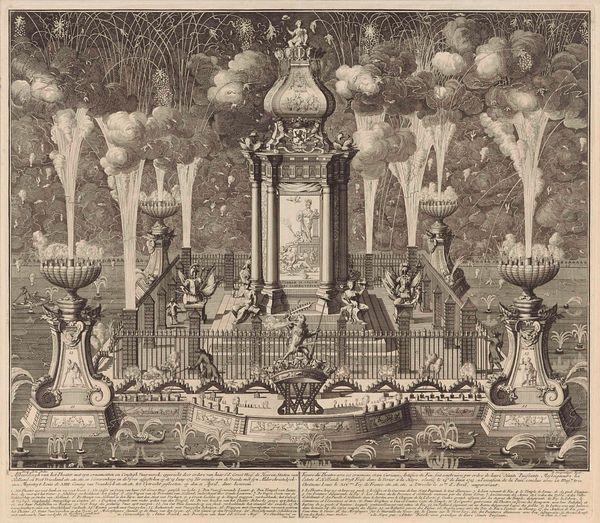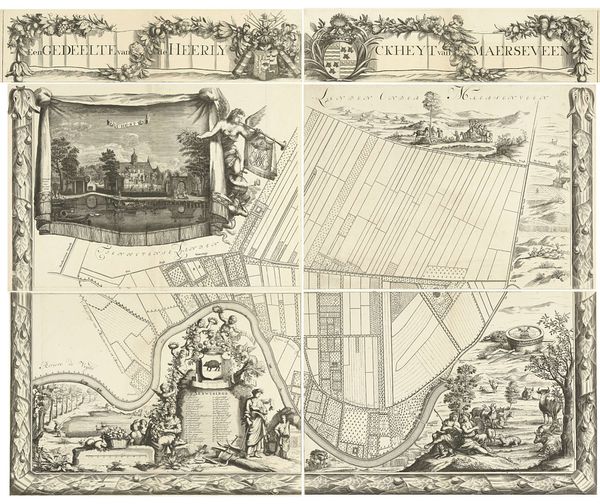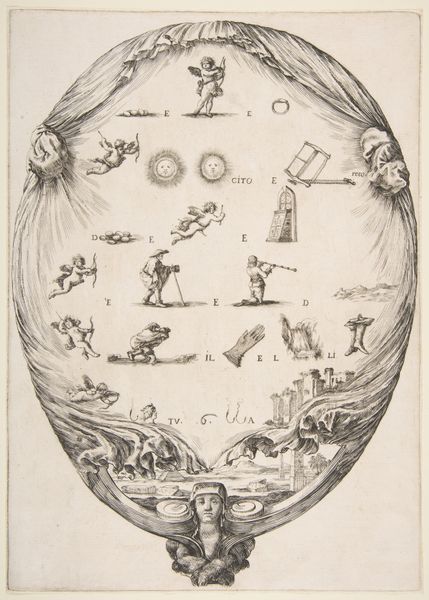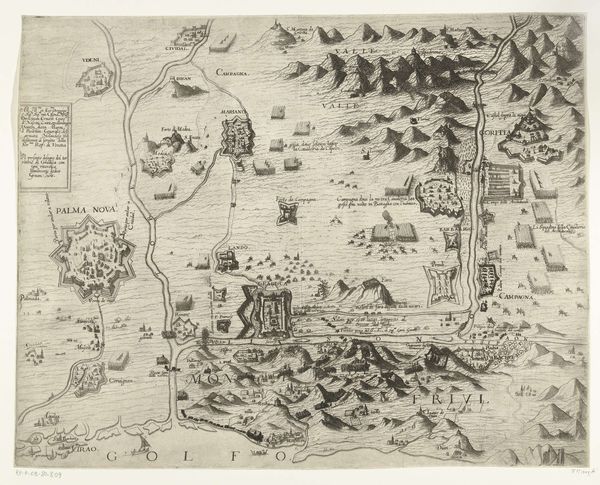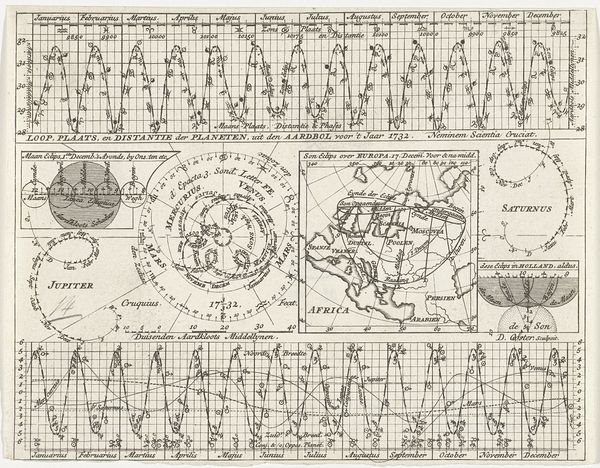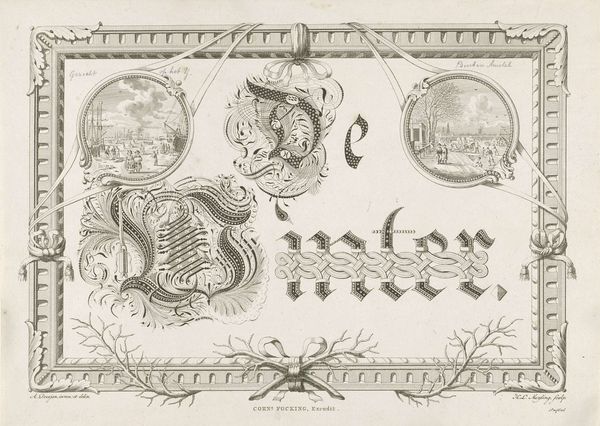
Le Triomphe de l'Hyménée (Furnishing Fabric) c. 1795
0:00
0:00
mixed-media, print, weaving, textile
#
mixed-media
#
allegory
# print
#
weaving
#
landscape
#
textile
#
romanticism
#
decorative-art
Dimensions: 208 × 155 cm (82 × 61 in.)
Copyright: Public Domain
Curator: At first glance, this fabric feels delicate, almost dreamlike. The monochromatic palette and repeating motifs create a serene, visually rhythmic effect. Editor: Indeed. We are looking at "Le Triomphe de l'Hyménée," which translates to "The Triumph of Hymen," a furnishing fabric crafted around 1795 by Favre, Petitpierre et Cie. This piece in the Art Institute of Chicago employs mixed media, blending print and weaving techniques to realize its elegant design. Curator: Hymen, the Greek god of marriage. It’s interesting how this joyful occasion is represented in what appears to be almost grayscale – muting the emotional tone somewhat. Are the repeated vignettes meant to be stages of marriage? Editor: That’s an insightful observation. The neoclassical imagery – the couples in classical garb framed by architectural ruins and verdant landscapes – certainly invokes an idealized vision of marriage, reflective of the late 18th-century fascination with antiquity. The vignettes likely symbolize various aspects and expectations associated with matrimony. Curator: And all surrounded by swags and architectural elements! There's also this fascinating symbolic menagerie - these birds, so suggestive in heraldic art as emblems of family and communication… Are these elements alluding to the hopes, or perhaps even burdens, associated with the marital union? The fountain element speaks of abundance too. Editor: Precisely. Think about the socio-political context. This fabric would have adorned the homes of the upper class. Marriage at the time wasn’t just a personal union; it was a means of consolidating wealth and power. These symbols serve to validate the societal importance of marriage, a contract promising continuity and social stability. Curator: The Romanticism label here adds another layer of interpretation; it isn't merely decorative. Romanticism can inject complex emotions into everyday imagery. Editor: Agreed. While the neoclassical elements represent order, the Romantic touches introduce a layer of emotional depth, making the overall image a curious blend of structure and sentimentality. One wonders about the lives lived within these rooms, surrounded by such potent, and ultimately political, iconography. Curator: It truly gives us a view into how social ideals infiltrated everyday life. Even the furnishings had a didactic, perhaps propagandistic, function. Editor: Definitely, seeing this piece encourages us to contemplate not only the artwork itself, but the entire era and its complicated vision of such a life-altering institution as marriage.
Comments
No comments
Be the first to comment and join the conversation on the ultimate creative platform.
